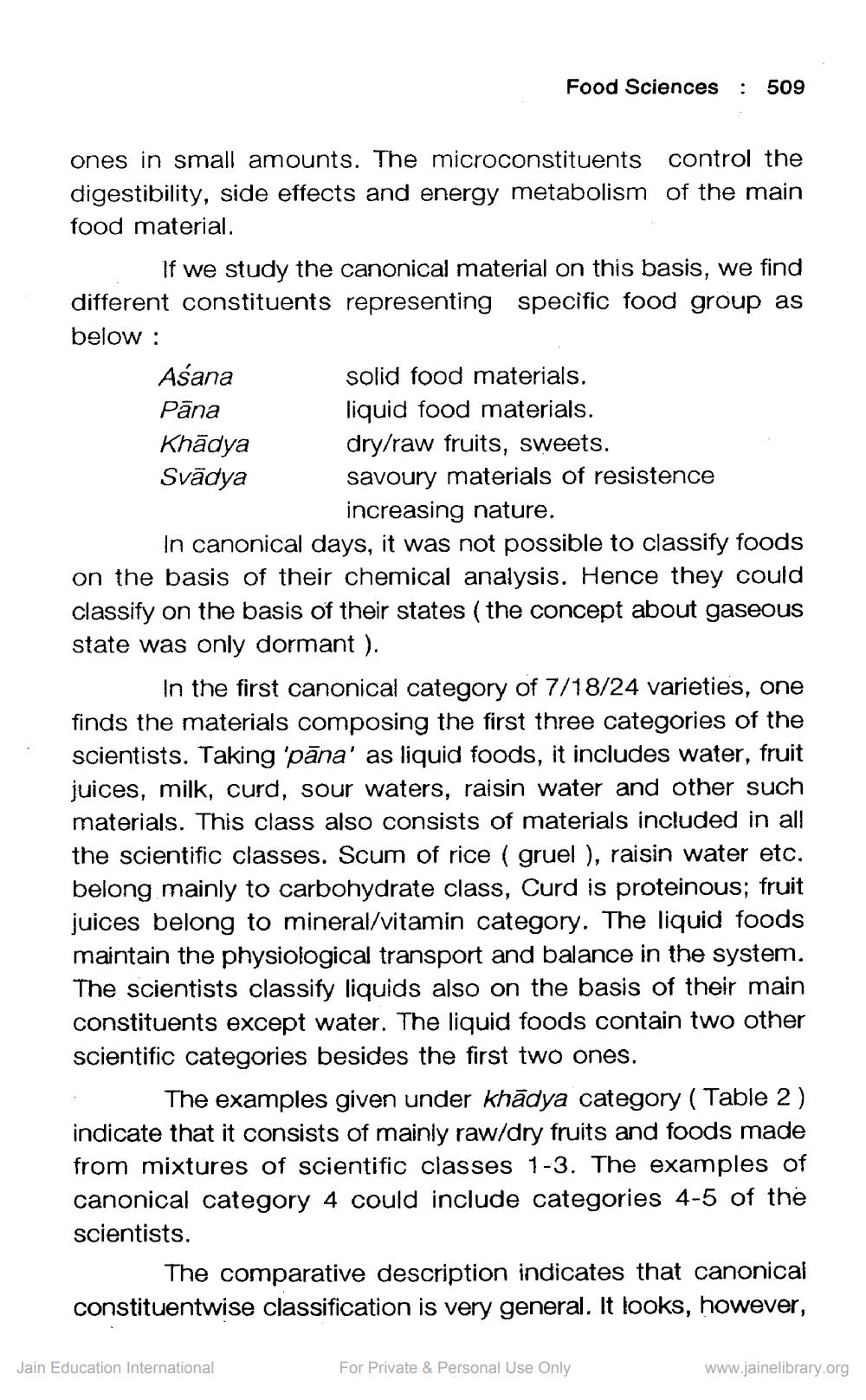________________
Food Sciences : 509
ones in small amounts. The microconstituents control the digestibility, side effects and energy metabolism of the main food material.
If we study the canonical material on this basis, we find different constituents representing specific food group as below : Asana
solid food materials. Pāna
liquid food materials. Khādya dry/raw fruits, sweets. Svādya savoury materials of resistence
increasing nature. In canonical days, it was not possible to classify foods on the basis of their chemical analysis. Hence they could classify on the basis of their states (the concept about gaseous state was only dormant ).
In the first canonical category of 7/18/24 varieties, one finds the materials composing the first three categories of the scientists. Taking 'pāna' as liquid foods, it includes water, fruit juices, milk, curd, sour waters, raisin water and other such materials. This class also consists of materials included in all the scientific classes. Scum of rice ( gruel ), raisin water etc. belong mainly to carbohydrate class, Curd is proteinous; fruit juices belong to mineral/vitamin category. The liquid foods maintain the physiological transport and balance in the system. The scientists classify liquids also on the basis of their main constituents except water. The liquid foods contain two other scientific categories besides the first two ones.
The examples given under khādya category (Table 2) indicate that it consists of mainly raw/dry fruits and foods made from mixtures of scientific classes 1-3. The examples of canonical category 4 could include categories 4-5 of the scientists.
The comparative description indicates that canonical constituentwise classification is very general. It looks, however,
Jain Education International
For Private & Personal Use Only
www.jainelibrary.org




